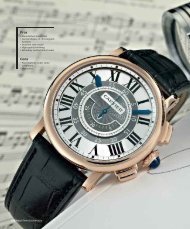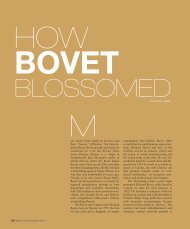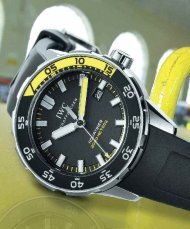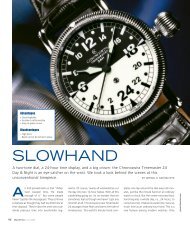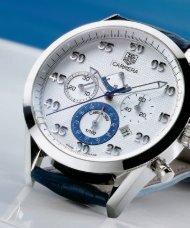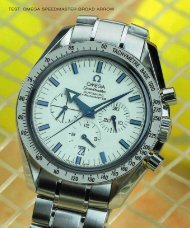WT_2008_03: TEST: BLANCPAIN FIFTY FATHOMS
WT_2008_03: TEST: BLANCPAIN FIFTY FATHOMS
WT_2008_03: TEST: BLANCPAIN FIFTY FATHOMS
Create successful ePaper yourself
Turn your PDF publications into a flip-book with our unique Google optimized e-Paper software.
<strong>TEST</strong><br />
Blancpain Fifty Fathoms<br />
B<br />
lancpain’s Fifty Fathoms was something of a novelty when it<br />
first appeared in 1953. In an era of function-foremost diving<br />
watches, the Fifty Fathoms combined elegant good looks with<br />
deep-seaworthy water-resistance and extreme durability.<br />
In 20<strong>03</strong>, to mark the 50th anniversary of this stylish but<br />
rugged watch, Blancpain introduced an updated, refined version<br />
of it, a limited edition of three series of 50 pieces each. It sold<br />
out in no time. Watch enthusiasts and collectors were virtually<br />
knocking each other over to get their hands on it.<br />
It came as no surprise, then, when last year Blancpain came<br />
out with an unlimited version of the watch as part of a new Fifty<br />
Fathoms collection. Unlike the 20<strong>03</strong> limited edition, which contained<br />
the Frédéric Piguet Caliber 1151, with two barrels and<br />
100 hours of power reserve, the 2007 model is powered by<br />
Blancpain’s newly developed Caliber 1315. This movement is<br />
based on the exclusive Blancpain manufacture hand-wound<br />
Caliber 13R0, with three barrels and a power reserve of eight<br />
days, which came out in 2006.<br />
Like the 13R0, the 1315 has three barrels. Unlike it, though,<br />
the 1315 is an automatic. To ensure that the reduction gear train<br />
of the automatic winding mechanism could be integrated into<br />
the 1315, the movement’s three barrels had to be somewhat<br />
smaller than those of the 13R0. They nonetheless generate a<br />
torque of 550 g/mm, enough for five days of power reserve,<br />
which should be more than sufficient for an automatic caliber.<br />
Winding the watch by hand after it is completely wound down<br />
requires 108 turns of the crown.<br />
The bimetal rotor winds in one direction. Unidirectional<br />
winding was chosen over bidirectional to save space, since incorporating<br />
a reverser would have either decreased the power reserve<br />
further or increased the height of the caliber. At a mere 5.65<br />
mm, the caliber’s slimness allows for a three-part, soft-iron, antimagnetic<br />
inner case, which envelopes the entire movement without<br />
making the Fifty Fathoms feel bulky. The watch’s level of an-<br />
June <strong>2008</strong> WatchTime 137



